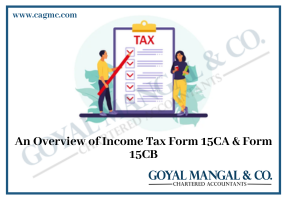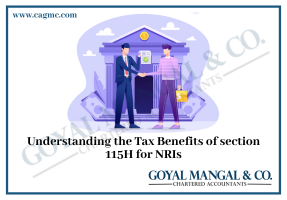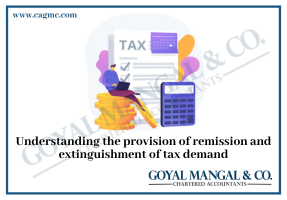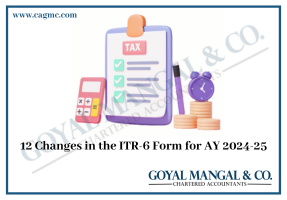
Taxation is a crucial component of any economy, including India. It is a process by which the government collects revenue from its citizens to finance its various social and economic programs. In India, taxation has both objectives and implications that are essential to understand. This article will discuss the Implications and Objectives of Taxation in India.
|
Table of Content |
Quick look
There are many sources of revenue for the government, but taxation is the most significant source. A tax is a mandatory payment made to the government by individuals and businesses based on certain well-established rules or criteria. These criteria, such as income earned, property owned, capital gains realized, or expenditure incurred (money spent), apply to both domestic and imported goods.
Taxation is utilized as an economic policy tool in the modern world. It has an impact on overall output, consumption, investment, industrial location and techniques, the balance of payments, income distribution, and so on.
Taxation in India
In India, taxation is primarily divided into two categories – Direct and Indirect taxes. Direct taxes are paid directly by the individuals or companies who are liable to pay the tax. It is based on the individual’s or company’s income or profits. The government imposes direct taxes on individuals, Hindu Undivided Families (HUFs), Association of Persons (AOPs), Body of Individuals (BOIs), and companies.
On the other hand, indirect taxes are paid by the consumers who purchase goods and services. It is levied on the goods or services purchased by an individual or a company. The government collects indirect taxes from manufacturers, wholesalers, and retailers.
Types of Taxes Imposed in India
The following are the taxes imposed in India:
- Income Tax: Income tax is a direct tax that is levied on an individual’s income or earnings. It is calculated on the basis of a slab system, where individuals are taxed according to their income range. Individuals who earn more than Rs. 2.5 lakhs per annum are liable to pay income tax. Income tax is one of the significant sources of revenue for the government.
- Corporate Tax: Corporate tax is a direct tax that is levied on companies’ profits. It is calculated on the company’s net income after deducting expenses and losses. Companies are taxed at a flat rate of 30%, but it may vary for different industries.
- Goods and Services Tax (GST): Central Goods and Services Tax, 2017 (GST) is an indirect tax that was introduced in 2017. It replaced various indirect taxes like excise duty, VAT, and service tax. GST is a consumption-based tax that is levied on goods and services. It is calculated on the value of the goods or services consumed. GST is divided into two categories – Central GST and State GST.
- Customs Duty: Customs duty is an indirect tax that is levied on goods imported into the country. It is calculated on the value of the goods imported and is collected by the Central government. The rate of customs duty varies according to the type of goods imported.
- Excise Duty: Excise duty is an indirect tax that is levied on the goods produced or manufactured within the country. It is collected by the Central government and is calculated on the production value of the goods. Excise duty is applicable to all goods except alcohol, tobacco, and petroleum products.
Objectives of Taxation in India
The main Objectives of Taxation in India is to finance the government’s expenditure on public goods and services, such as education, health, infrastructure, and defense. Taxation provides the government with the necessary resources to undertake development programs, which, in turn, promote economic growth:
- Economic Development: Economic Development is one of the most important objectives of taxes. The expansion of capital formation is the main determinant of the economic progress of any country.
Capital formation is considered a fundamental pillar of economic progress. However, lack of capital is common in less developed countries. To address capital shortages, governments in these countries are deploying resources to accelerate capital formation. The government uses tax revenue to increase public and private investment through various expenditures. With proper tax planning, the ratio of savings to national income can be increased, which will further help the economy to develop. - Non-Tax Objective: Non-Tax Revenue is the recurring income of the government from sources other than taxes. They are extremely important because they help the government and improve public finances. Reducing income and wealth inequality is another non-revenue goal of taxes. This can be achieved by taxing the rich at a higher rate than the poor or by introducing a progressive taxation system.
- Price Stability: Taxes can be used to maintain price stability, which is the short-term goal of taxation. Taxes are considered a good way to keep inflation under control. Increased direct tax rates can be used to curb private spending, further reducing excess demand. Naturally, the commodity market is therefore under less pressure. As for indirect taxes on products, they worsen inflationary trends.
- Balance of Payments (BOP) problems are reduced: Rising current account deficits are sometimes a sign of impending balance of payments problems. Capital inflows, other net currency inflows, or a reduction in foreign exchange reserves are needed to finance current account deficits. Tariffs and other taxes are also used to regulate imports of certain commodities to reduce the severity of balance of payments problems and encourage domestic production of import alternatives.
- Full Employment: Because the level of employment is determined by effective demand, a government seeking to achieve full employment must lower its tax rate. As a result, disposable income will increase, and in turn, demand for products and services will also increase. Increased demand will drive investment, leading to increased incomes and employment through a multiplier effect. The greater the barriers to work, the higher the tax wedge.
- Redistributing Income: A taxation is a tool that can be used to redistribute income by levying higher taxes on the rich and lower taxes on the poor. This helps to reduce income inequality and promote social justice.
- Controlling Inflation: By increasing taxes, the government can reduce the amount of money in circulation, which can help to control inflation. Additionally, certain taxes such as excise duty and customs duty can be used to regulate the prices of goods.
- Encouraging Investment: The government can provide tax incentives to encourage investment in specific sectors or regions, which can help to promote economic growth.
Implications of Taxations in India
The followings are the tax implications in India:
- Horizontal Equity: The concept of horizontal equity is important in the field of taxation and suggests that people in similar or the same position will have the same tax burden. It is an economic theory that states that people with the same income and wealth should pay the same tax rate. Horizontal justice should apply to people who are considered equal.
- Ability-To-Pay Principle: According to the ability-to-pay concept, individuals with a better ability to pay taxes (as measured by income and wealth) should pay more. This concept suggests that individuals who have achieved success should be prepared to give back a little more to the society that helped them achieve it.
- Principle of Advantage: Taxes under the principle of advantage serve a similar purpose as prices in private transactions. Specifically, they help determine what activities the government will perform and who will pay for them. In fact, the benefits principle is difficult to apply to most public services because individuals are often unwilling to pay for a publicly provided service, such as a police department unless they can be excluded from the benefits of the service.
- Stability: Tax rules should change rarely. When adjusting tax rules, should be part of a comprehensive and systematic tax reform. The reform contains enough provisions for a fair and orderly transition. Frequent changes in tax legislation can lead to lower compliance or behavior that tries to adapt to possible future changes in the tax system.
- Clarity: Tax rules and regulations must be understandable to the average taxpayer. It must be as straightforward as possible. Tax rules should be clear and straightforward. This not only leads to a considerable amount of inaccuracy but also undermines honesty and respect for the law. A vague tax will discriminate against the poor and uninformed, which are unable to take advantage of the myriad legal alternatives to tax savings available to the educated and wealthy.
- Tax Burden: Taxation imposes a burden on taxpayers, reducing their disposable income. In India, the tax burden is often higher on the middle class, which can affect their purchasing power and standard of living.
- Compliance Costs: Compliance costs are the expenses incurred by taxpayers to comply with tax laws and regulations. The complexity of the Indian tax system and frequent changes in tax laws can increase compliance costs, particularly for small and medium-sized businesses.
- Tax Evasion: Tax evasion is a significant challenge in India. Taxpayers may not pay taxes due to various reasons, such as corruption, inadequate enforcement, or a lack of trust in the government. Tax evasion reduces the revenue collection of the government and affects the effectiveness of the tax system.
- Economic Efficiency: The design of the tax system can impact economic efficiency. High tax rates or poorly designed tax policies can discourage economic activities, such as investment and consumption, which can have negative consequences on economic growth.
Conclusion
As mentioned earlier, the primary objective of a national tax system is to produce revenue to pay for all levels of government spending. A tax system should have some desirable features such as simplicity, ease, and productivity. If the government is to achieve equality, the tax system should be clear. Most tax systems are based on a reasonable compromise between several concepts and canons. The Indian tax system is not fair. It leads to injustice. Since the poor pay most of the indirect taxes, the distribution of income is increasingly uneven. The Indian tax system is very inefficient.







